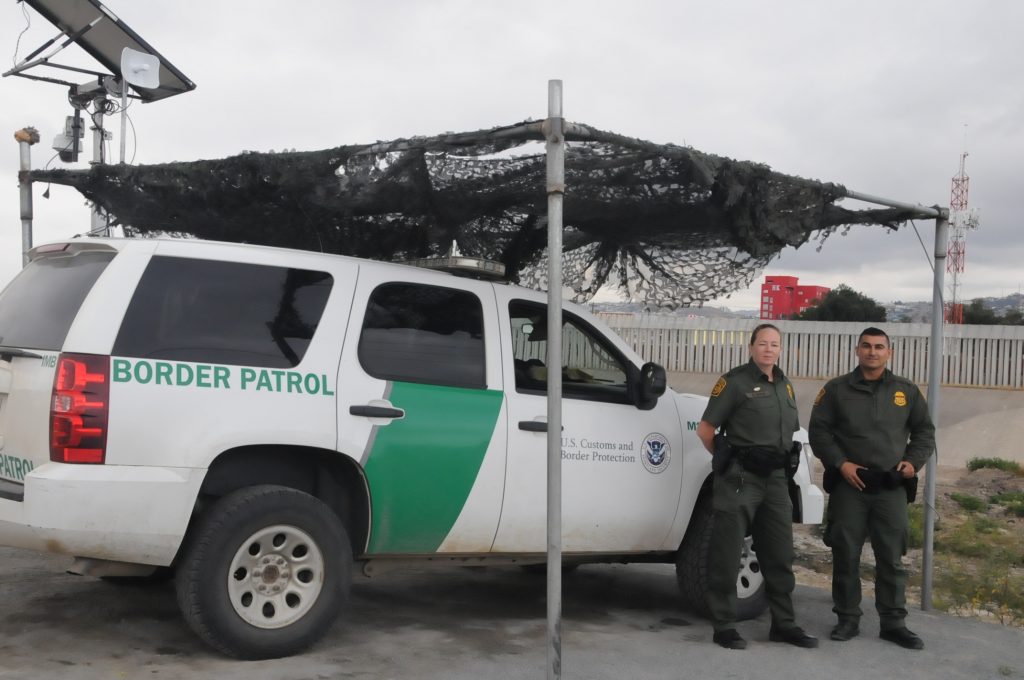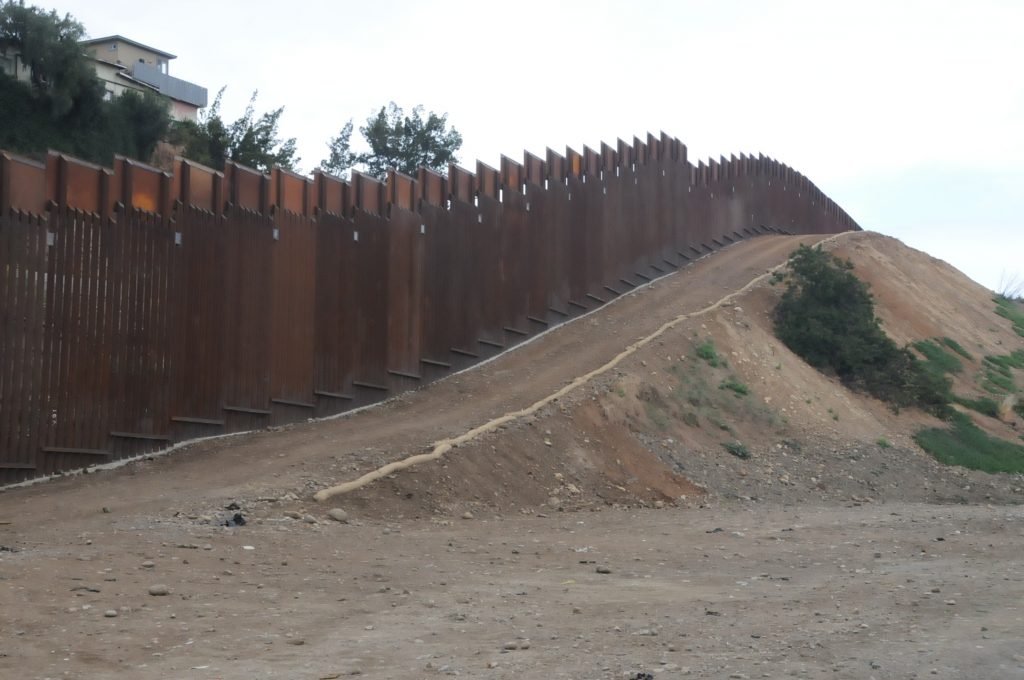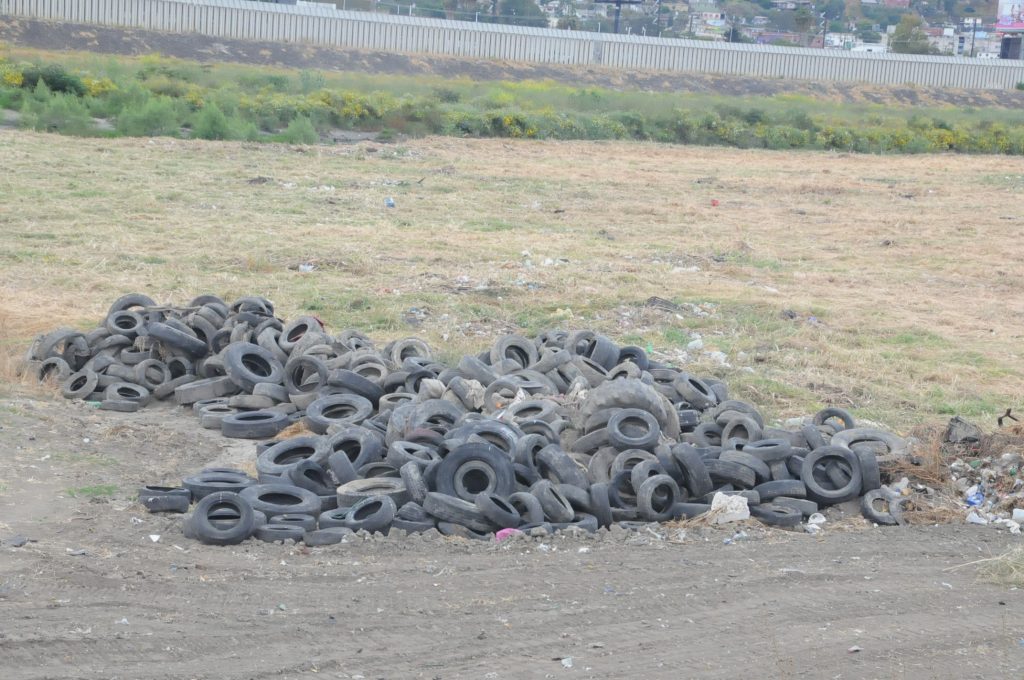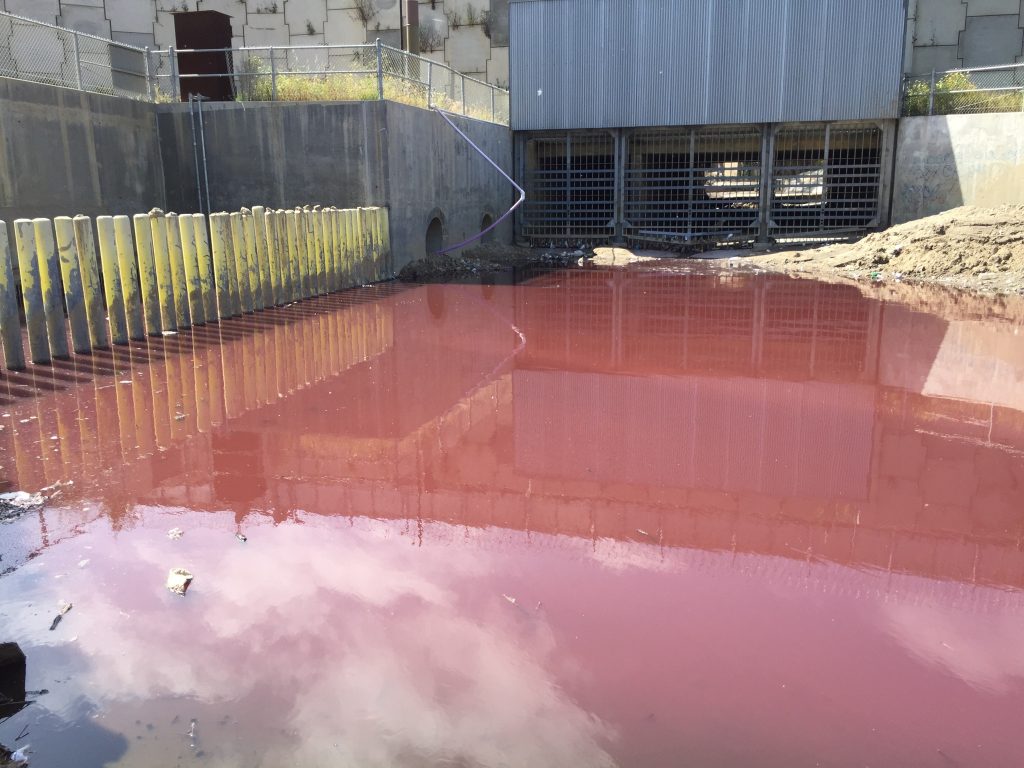Every second counts in the lives of Amber Craig and Fabian Carbajal, just two of the dedicated 2,200 Border Patrol Agents of the San Diego sector which stretches 60 miles from the ocean to the mountains of El Centro. My eyes were opened wide on a recent trek with these agents who want to get the word out about the increasingly dangerous crisis that looms at the border that doesn’t get the same attention as the immigrant issues; but the two are actually intertwined.
The sewage problem is not a new one, tracing back to the 1930s, but most recently escalating in 2017, which was both a blessing and a curse. In February 2017, a 143-million-gallon sewage spill was reported from the Tijuana facility, but many feel that the number was much higher. This incident got the public, and more importantly the local, national and federal governments, to look at this growing emergency and start investigating and implementing solutions to help solve the problem. It also brought attention to the potential hazardous impact created by prolonged contact with sewage. With heightened awareness, incidents are now being documented to create data on the long-term effects on Border Patrol Agents. Some of the symptoms include, but are not limited to: burning eyes, scratchy throats from inhaling fumes, skin exposure even through clothes, and stomach problems due to bacteria. One of the more severe cases happened to a now medically discharged agent, while training for a specialty unit, near the ocean when he contracted a flesh-eating bacteria and almost had to have his arm amputated. Craig also told the story about a colleague who had the soles of his new boots come apart after trekking through toxic areas, which is considered routine part of the job. As we were walking through the Tijuana Riverbed, it made us wary of exactly what was under our feet.
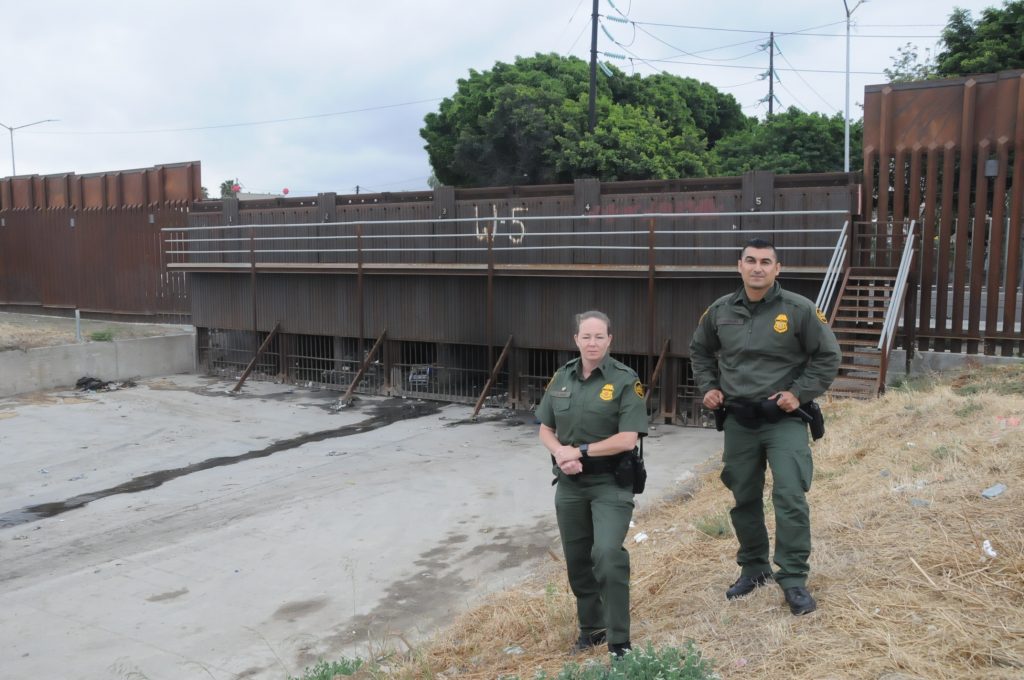 “We realize the dangers of being a Border Patrol Agent. We know that we might get shot and that our lives are in danger on any given day, but no one signed up to deal with the unexpected hazards of sewage issues,” comments Craig. She pointed out that it is worrisome to think about the contamination in their personal lives as they launder their uniforms at home. Efforts have been stepped up for issuing personal protective equipment including carbon filter masks, car air filters, Tyvek suits for water exposure, heavy duty car mats, heavy duty nitrile gloves, and face masks to protect from overspray when washing the patrol vehicles. We sprayed our feet off with Lysol after walking in the Tijuana Riverbed and Craig joked that they could be the “poster people” for how much Lysol they use. Needless to say, on her recommendation, my shoes promptly went in the garbage when I arrived home. Sewage spills also affect Navy personnel, SEAL trainees, and Tijuana, Imperial Beach and Coronado beachgoers and surfers.
“We realize the dangers of being a Border Patrol Agent. We know that we might get shot and that our lives are in danger on any given day, but no one signed up to deal with the unexpected hazards of sewage issues,” comments Craig. She pointed out that it is worrisome to think about the contamination in their personal lives as they launder their uniforms at home. Efforts have been stepped up for issuing personal protective equipment including carbon filter masks, car air filters, Tyvek suits for water exposure, heavy duty car mats, heavy duty nitrile gloves, and face masks to protect from overspray when washing the patrol vehicles. We sprayed our feet off with Lysol after walking in the Tijuana Riverbed and Craig joked that they could be the “poster people” for how much Lysol they use. Needless to say, on her recommendation, my shoes promptly went in the garbage when I arrived home. Sewage spills also affect Navy personnel, SEAL trainees, and Tijuana, Imperial Beach and Coronado beachgoers and surfers.
Amber Craig has been a Border Patrol agent for 21 years in San Diego. She has had some temporary details in other regions but has spent the last four years as Public Lands Liaison helping to coordinate with the various public agencies for Border Patrol operations on their property, consulting with them for things like road maintenance and habitat protection, and educating the public on how the Border Patrol supports environmental stewardship, particularly during major projects like wall construction. When asked how she chose to become a Border Patrol Agent, she answered, “I was always a tough gal who was into martial arts. While I was in junior college, trying to decide what to be when I grew up, I had a conversation with a Border Patrol Agent who sold me on the job and I’ve never looked back.”
Women comprise only five percent of Border Patrol Agents, but they are working to change that. Many former military personnel sign up with the Border Patrol due to the paramilitary environment and federal jurisdiction. Craig explained that it used to be easier to recruit, but the current political climate has made it a much harder sell. San Diego is often considered the most coveted region with Ajo, AZ being the most remote in the heart of the Sonoran Desert.
A Chula Vista native, Fabian Carbajal always wanted to be a marine and signed up on September 10, 2001, fatefully the day before everything changed on 9/11. After serving in Iraq, including Fallujah, he decided to look for opportunities in a different line of law enforcement. After applying to various agencies, the Border Patrol called to say his background check was complete and asked when he could start. He was happy to be located in San Diego and accepted the position.
 Our three-hour journey took us from the North Levee to the sewage collectors adjacent to the border fence in Tijuana, where we saw a bullring, commercial buildings and many old and new housing developments; and then proceeded to the ocean and past the Tijuana River Estuary.
Our three-hour journey took us from the North Levee to the sewage collectors adjacent to the border fence in Tijuana, where we saw a bullring, commercial buildings and many old and new housing developments; and then proceeded to the ocean and past the Tijuana River Estuary.
As we drove between the border fences, Carbajal mentioned that they deal with an average of 175 apprehensions of people trying to cross the border each day. “Every minute is crucial in catching illegal immigrants trying to cross the border here, because if they get past the fence into the city, then it is much easier for them to hide and escape than out in deserted areas where agents can more easily track them,” says Carbajal. They said that enhanced border enforcement has contributed to helping the neighboring cities grow and prosper.
The original Vietnam era eight-foot border fence was erected in the 1990s and helped to stop smuggling vehicle crossings. It was replaced in 2018, varying in height up to 21 feet, depending upon the Mexican topography. To combat rising illegal crossings, 18-foot fences were installed in phases starting east of the San Ysidro Port of Entry in 1997 with more added on the west side in 2008. Concertina wire tops were installed there in 2007 and in the Imperial Beach Station area in 2015, and these cover 13 and a half miles out of the 60-mile stretch. Even these barriers don’t deter smuggler “coyotes” from building crude ladders to help people try to get across.
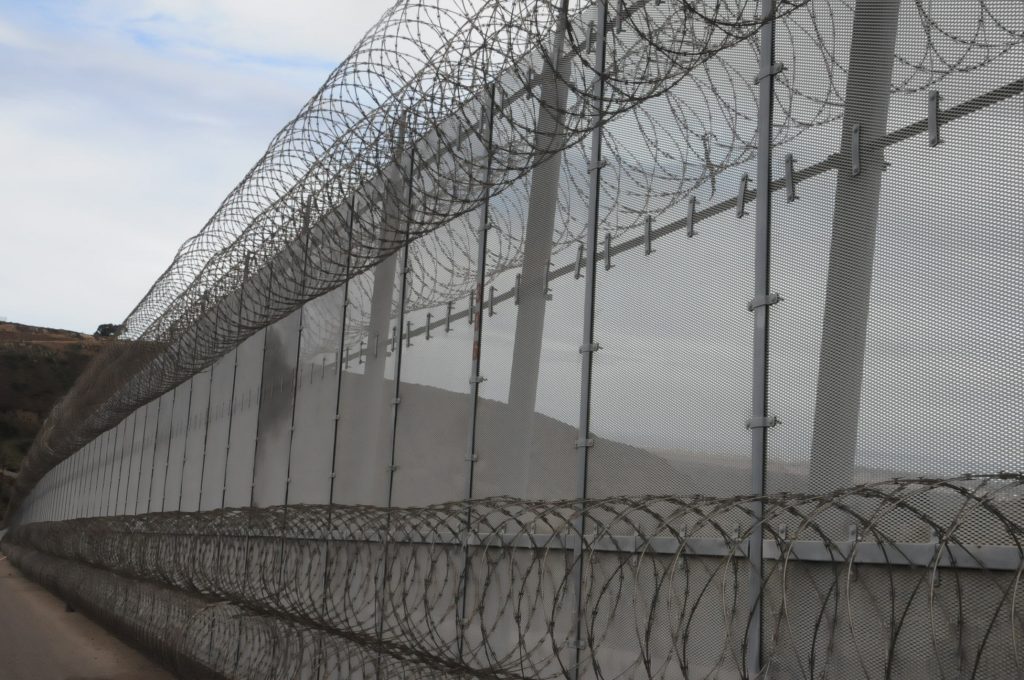 We were able to drive on the roadway between the two fences that sit on the border as they pointed out the hill above Smuggler’s Gulch where spotters conduct surveillance to help groups escape across. Cell phones are instrumental in helping guide groups remotely. Agents often see a smuggler sending one person to try to cross the fence and watch as agents converge on that location, and then they signal to another group to cross in a different location. Carbajal said that the cost to try to illegally cross the border used to be around $2,000 per person, but now with the increased difficulty, rates have risen to $6,500 or more.
We were able to drive on the roadway between the two fences that sit on the border as they pointed out the hill above Smuggler’s Gulch where spotters conduct surveillance to help groups escape across. Cell phones are instrumental in helping guide groups remotely. Agents often see a smuggler sending one person to try to cross the fence and watch as agents converge on that location, and then they signal to another group to cross in a different location. Carbajal said that the cost to try to illegally cross the border used to be around $2,000 per person, but now with the increased difficulty, rates have risen to $6,500 or more.
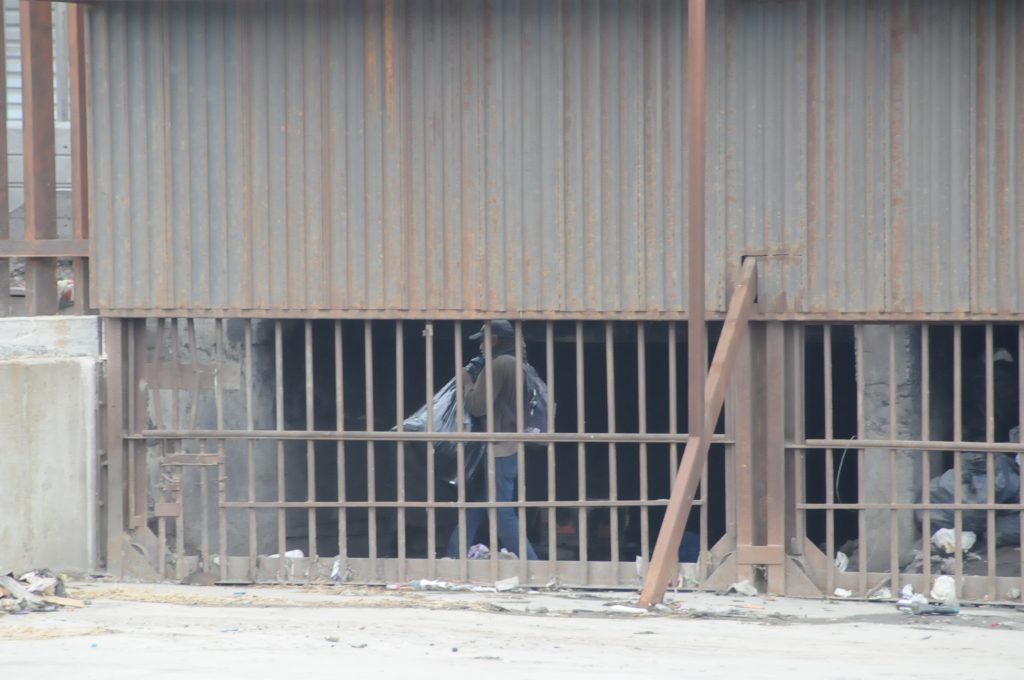 Often, the smugglers even send illegals to climb into the storm drains, filled with sewage-soaked debris, to squeeze through the grates when they are raised to accommodate the flow during rains, with no regards to the health hazards. Craig says there have been reports of moms and their children climbing through all the sewage muck because they were told that the Border Patrol Agents were less likely to apprehend them in there. Agents have to constantly monitor these areas for tampering.
Often, the smugglers even send illegals to climb into the storm drains, filled with sewage-soaked debris, to squeeze through the grates when they are raised to accommodate the flow during rains, with no regards to the health hazards. Craig says there have been reports of moms and their children climbing through all the sewage muck because they were told that the Border Patrol Agents were less likely to apprehend them in there. Agents have to constantly monitor these areas for tampering.
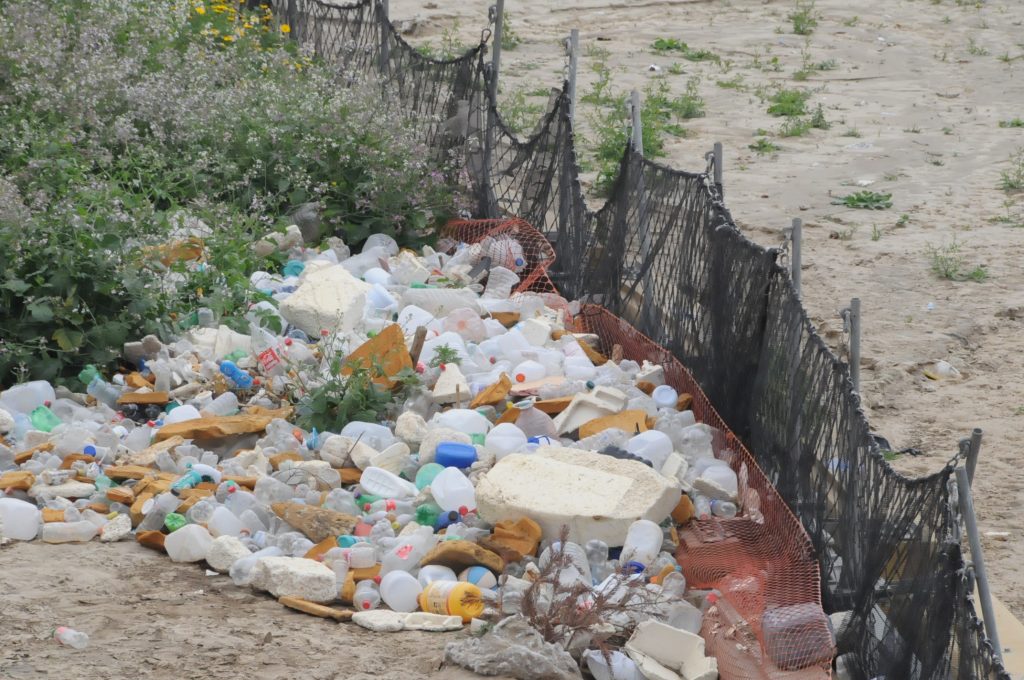 The South Bay International Wastewater Treatment Plant (SBIWTP) can treat an average of 26 million gallons of sewage from Mexico per day, but sewage and debris still come through the five canyon collectors and flow into the Tijuana River Valley (TRV). This leaves a ton of residue and debris in the collectors, for which the International Boundary and Water Commission (IBWC) is in charge of keeping clear. The Border Patrol is responsible for debris inside the grate systems and hires outside contractors to help.
The South Bay International Wastewater Treatment Plant (SBIWTP) can treat an average of 26 million gallons of sewage from Mexico per day, but sewage and debris still come through the five canyon collectors and flow into the Tijuana River Valley (TRV). This leaves a ton of residue and debris in the collectors, for which the International Boundary and Water Commission (IBWC) is in charge of keeping clear. The Border Patrol is responsible for debris inside the grate systems and hires outside contractors to help.
 The debris-filled water flows through the Tijuana Riverbed all winter, but in accordance with the bi-national U.S. and Mexico border agreement, it is not supposed to flow during dry weather. Craig said that it usually still runs through at least a couple times a month, even during the summer months, due to faults in the aging and inadequate infrastructure in Tijuana, and because of problems with the Mexican pump station in the main river channel that is supposed to divert errant flows to a treatment facility.
The debris-filled water flows through the Tijuana Riverbed all winter, but in accordance with the bi-national U.S. and Mexico border agreement, it is not supposed to flow during dry weather. Craig said that it usually still runs through at least a couple times a month, even during the summer months, due to faults in the aging and inadequate infrastructure in Tijuana, and because of problems with the Mexican pump station in the main river channel that is supposed to divert errant flows to a treatment facility.
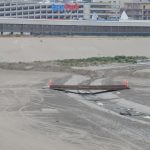
As we walked through the Tijuana Riverbed, we were aware of the raw sewage, tires, plastic and appliance trash, as well as toxic chemical waste that flow unimpeded down the Tijuana River where it then contaminates the beaches of Imperial Beach, Coronado and the Pacific Ocean. In an attempt to block flows, the IBWC recently constructed three-foot berms across the river.
This dire issue is a solvable problem, but the solution depends on a bi-national collaboration to address the issues of topography, engineering, poverty, rapid population growth, lack of planning, and government transparency. While sewage collection and treatment are key, the sediment and trash that clog canyons and storm drains and flow into the Pacific Ocean polluting our beaches must also be addressed.
Tijuana is one of the fastest growing cities in Mexico and considered the sixth largest by population. The city has seen a growth explosion in recent years with more than 1.7 million residents reported in 2018. The aging sewage facility is undersized for the growing population and has equipment and pipe failures which are harder to fix with the infrastructure located under the city. As the governing region of Tijuana, Baja California does not have the needed funds to upgrade the facilities to accommodate the growth requirements and needs additional funds to solve this problem.
In 2018, the State of California, the San Diego Regional Water Quality Control Board and the cities of San Diego, Chula Vista, Imperial Beach and the Port of San Diego, and the Surfrider Foundation have all filed lawsuits against the IBWC due to the excessive sewage in the TRV as a violation of the Clean Water Act. The City of Coronado is actively pursuing a diplomatic approach working with Congress, the Environmental Protection Agency (EPA), U.S. Trade Representatives negotiating NAFTA, the Pentagon and the White House Office of Intergovernmental Affairs. In response, Mexico pledged $4.3 million for clean-up and the replacement of deteriorating pipes, and while several have been fixed, there is much more that needs to be done. Recently, Senator Feinstein secured $15 million for the EPA’s Border Water Infrastructure Grant Program to help address this issue. The U.S. House of Representatives just released their budget which calls for $30 million for architectural, engineering, planning, design, construction and related activities in connection with the construction of high priority water and wastewater facilities in the area of the United States-Mexico Border, a significant increase from the $10 million in funding last year. While this is progress, more federal funding and bi-national cooperation is needed to solve the cross-border sewage spills.
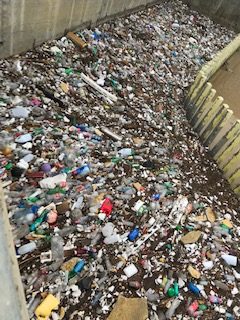
Our border journey led us to places like Goat Canyon, where according to Craig the water is visibly the worst, manifesting black and neon green water polluted with chemicals from industry and manufacturing just south in Tijuana. There is also an indeterminate amount of sewage which can come from the multitude of homes just south of the border. Mexican standards for treating sewage are different than the U.S., and when the effluent rises to unacceptable levels, there is cause for alarm, as evidenced by the beach closures due to the fear of health hazards in Tijuana, Imperial Beach and Coronado. I reached out to The Surfrider Foundation, an active proponent in this cause, and they provided the following 2019 beach closure statistics as of May 15, 2019, which show that the Tijuana Slough Shoreline has been closed 135 days, the Imperial Beach Shoreline has been closed 42 days, the Silver Strand Shoreline has been closed 26 days, and Coronado beaches have been closed 18 days.
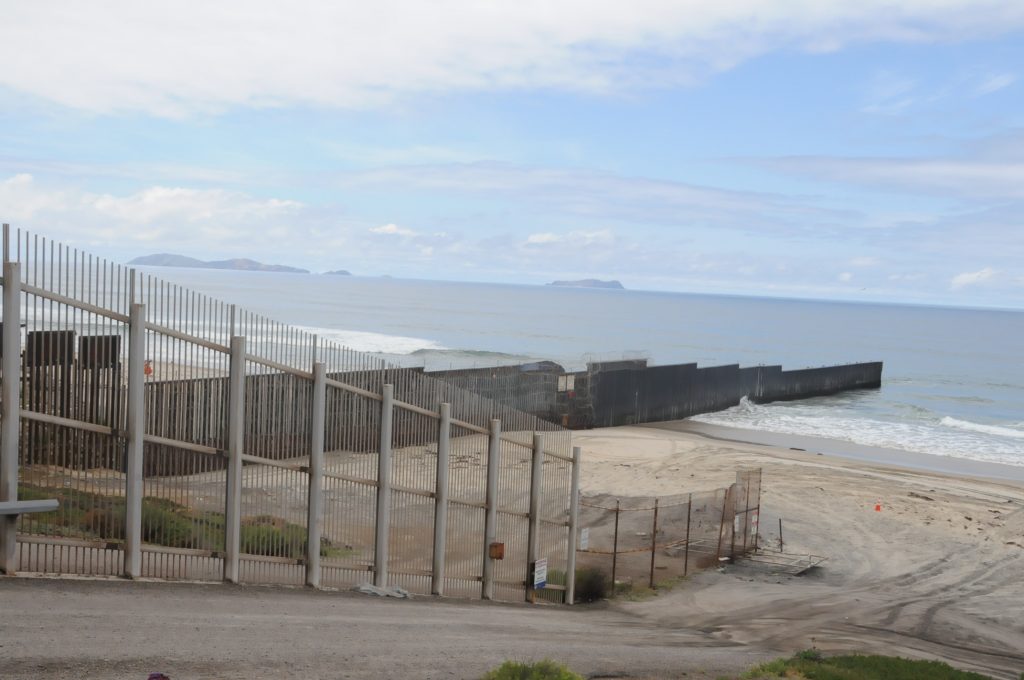 The Tijuana River Estuary, the only major wetland in Southern California not intersected by urban infrastructure, has also seen a huge impact on its wildlife. Craig has become a bird watcher with all her time spent there and she pointed out some snowy plovers, which nest in the sand from March through September. The flow of water on the road near this area keeps the Border Field State Park road closed the majority of the year to vehicles, so visitors must stay on the walking and horse trails to avoid hazardous exposure.
The Tijuana River Estuary, the only major wetland in Southern California not intersected by urban infrastructure, has also seen a huge impact on its wildlife. Craig has become a bird watcher with all her time spent there and she pointed out some snowy plovers, which nest in the sand from March through September. The flow of water on the road near this area keeps the Border Field State Park road closed the majority of the year to vehicles, so visitors must stay on the walking and horse trails to avoid hazardous exposure.
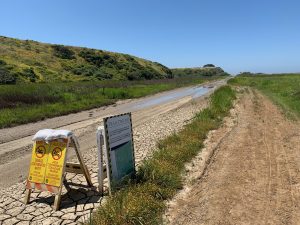
When we arrived at the beach with the Estuary on one side and Tijuana on the other, it was empty except for one lone horse rider on the U.S. side. There is always a Border Patrol Agent monitoring this stretch of shoreline, with high powered cameras to spot boats way in the distance. I gained a newfound respect for the Border Patrol Agents who put their lives on the line every day in numerous ways to help keep the U.S. safe.
Craig pointed out that the team created by former Commissioner of CBP (U.S. Customs and Border Patrol) Kevin McAleenan, who was just selected as the Acting Secretary of Homeland Security, to work on this issue back in 2017 is still engaged at the headquarters level with other federal agencies (like the EPA, Department of State, and the IBWC), our liaisons to Congress, and our inter-governmental liaison, and continues to ensure this topic is part of ongoing discussions with the Government of Mexico.
How can we help make a difference in both of these ongoing crises? By acknowledging they exist and making our voices heard to local, state and federal representatives and supporting groups who advocate for these causes, like the Surfrider Foundation. It’s important to secure funding and open cross-border collaborations to ensure the safety of everyone.
 Watch this video produced by Surfrider Foundation to learn more about this environmental and public health crisis:
Watch this video produced by Surfrider Foundation to learn more about this environmental and public health crisis:




